Choosing flatware might seem like a small decision, but it’s actually a big consideration for consumers. On average, Americans only buy three sets in their entire lifetime!
On top of this, cutlery is probably one of the most used items in any kitchen. It’s there for every meal, every day. So, when consumers shop for flatware, whether for themselves or as a thoughtful gift, businesses should know a few key things before giving them options.
Buying a high-quality modern flatware set is an investment, but it can last years and be passed down to future generations. This article will explore the top flatware sets businesses can sell to consumers in the 21st century.
Table of Contents
A summary of the flatware market
Flatware sets: Different options to stock in the 21st century
Rounding up
A summary of the flatware market
Experts say the global flatware market accumulated US$ 10.5 billion in 2023 and is expected to reach US$ 16.4 billion at a 4.5% compound annual growth rate (CAGR) by 2033. Similarly, the market registered a historical 2.7% CAGR from 2018 to 2022. The market’s drivers include the rising demand for stylish, high-quality flatware products, increasing disposable incomes, and changing preferences towards informal dining.
Historically, Europe generated the most sales and will remain dominant thanks to higher flatware adoption, especially in Western European nations (like France, Germany, and Italy). On the other hand, Asia Pacific will register the fastest CAGR because of increased cutlery implementation in China (which is the majority of the regional market).
Flatware sets: Different options to stock in the 21st century
1. Fork sets
Forks are among the most common utensils consumers use for eating. These tools are incredibly versatile and come in four different types. Here’s a closer look at each and their role in a set.
Dinner fork
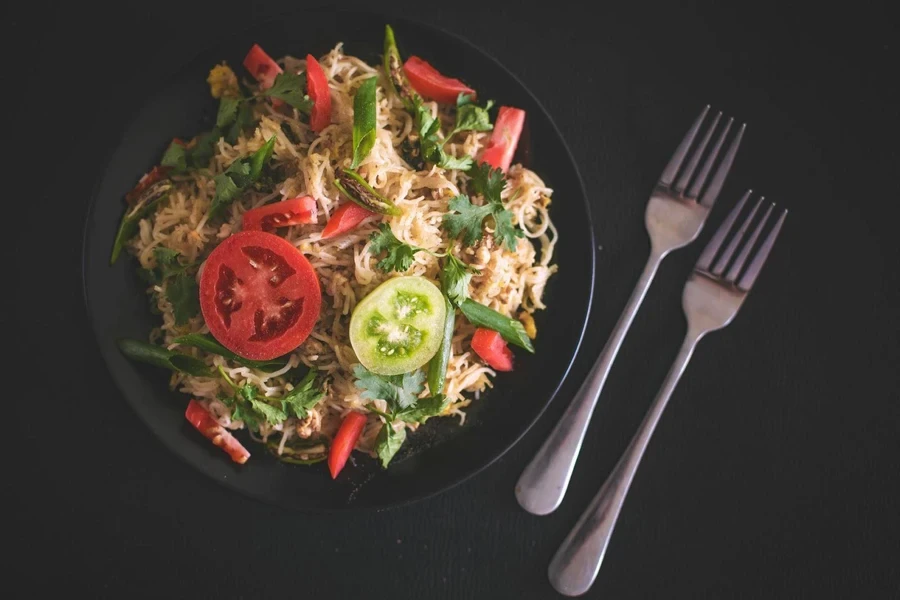
The dinner fork is the go-to for main dishes (like pasta, steak, or anything hearty). It has a slim, sleek design, typically with four tines, and usually measures 7 to 9 inches. These forks are also pretty durable.
Manufacturers often design dinner forks for everyday use, giving them non-slip handles that make them easy to hold. Some forks even have specialized tines for salads or seafood. Practical and versatile, dinner forks are a staple in any flatware set!
Salad fork
The salad fork may be smaller, but it’s a must-have for any flatware set. At 6 to 8 inches long, it’s perfect for salads and appetizers, making them a great way to add an extra touch to the dining experience.
While it’s a more recent addition to formal table settings, it’s now a staple in almost every flatware set. Businesses can offer two main types: the European version (with 2-4 fork tines) and the American style (usually with 4-5 times).
Dessert fork
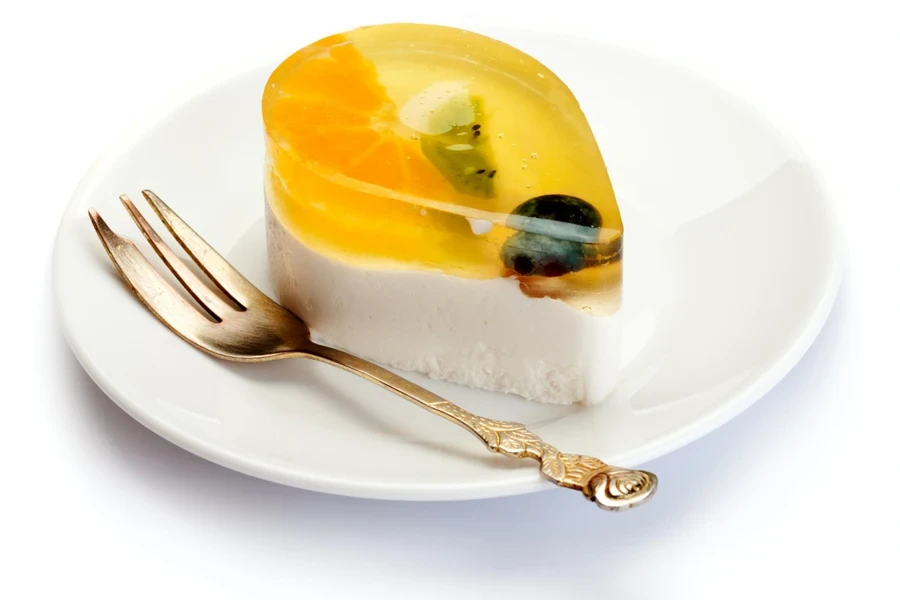
The dessert fork, usually 6 to 7 inches long, is the consumer’s trusty sidekick when it’s time for something sweet (pie, cake, or a tasty tart). It looks a lot like a salad fork but smaller, and there’s a reason for its design.
That wider left tine helps consumers easily slice their dessert without a knife. Some dessert forks even come with special tines designed for treats like cheese or fruit, making them just as versatile as they are charming.
2. Spoon sets
Spoons are another important part of flatware sets. Their rounded bowl-shaped ends make them the best for scooping, stirring, and eating solid/liquid foods. Every flatware collection should have different spoon options, so here are some popular ones.
Tablespoons
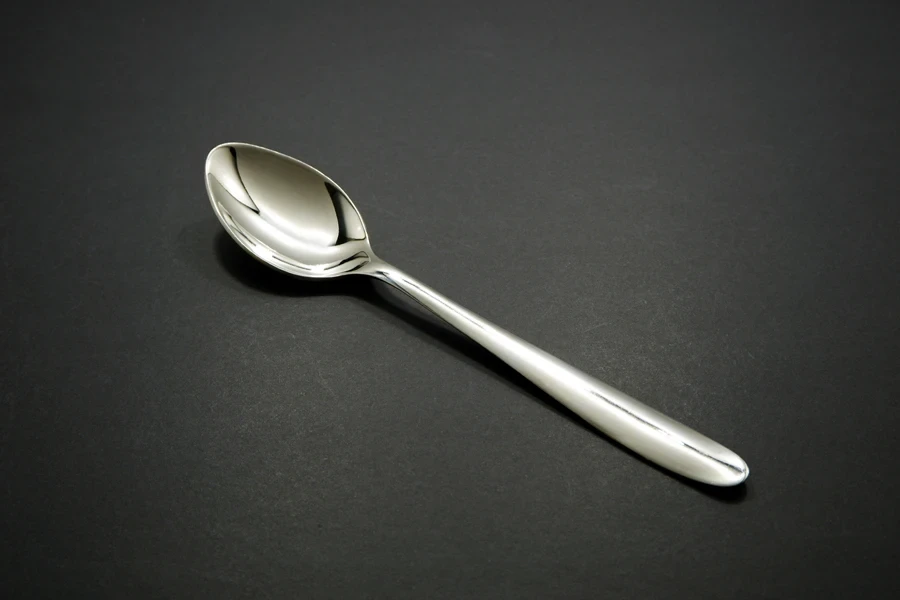
The tablespoon is one of those dining essentials that can almost do it all. At 7 to 9 inches long, with a 2 to 3-inch oval bowl, it’s perfect for scooping up soups, stews, cereal, and just about anything else.
This flatware is suitable for both casual and formal settings. However, formal settings often place tablespoons on the right side of the plate. Nevertheless, its larger size makes it a great companion to your dinner fork, perfectly rounding out any table arrangement.
Bouillon spoon
“Bouillon” is French for broth, and a bouillon spoon is the perfect tool for sipping perfectly portioned spoonfuls of soup in a European-style meal. They aren’t typically used in everyday settings but appear when the right course comes.
These small spoons, usually 5 to 5.5 inches long, have a round, deep bowl that’s great for sipping just the right amount. Because of its size, it’s also perfect as a tasting spoon, letting consumers sample soups or liquids without diving into a full portion.
Teaspoon
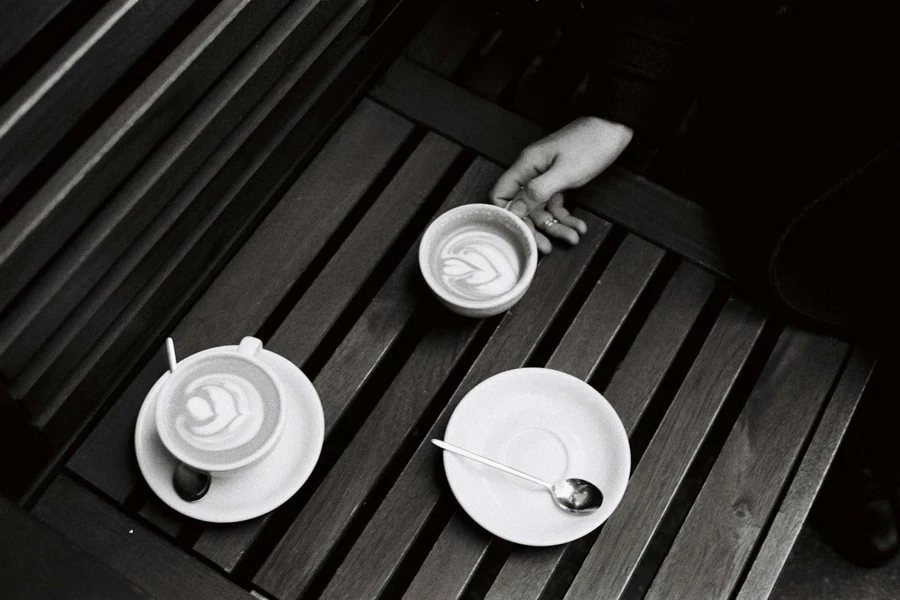
The teaspoon is a true multitasker in any kitchen. Whether consumers are scooping up yogurt, cereal, oatmeal, or even creating mini desserts like trifles or panna cotta, this little spoon does it all. It’s also handy for adding the finishing touch to cocktails.
This flatware is suitable for both casual meals and more formal dining. However, it is always part of the classic 5-piece place setting. With its teardrop shape and round tips, it’s typically 5.5 to 6.5 inches long.
Dessert spoon
The dessert spoon (usually 7 to 7.5 inches long) is the go-to for indulging in treats like pudding, ice cream, or custard. Its deeper bowl makes scooping up every delicious bite easy and satisfying. Consumers might swap it out for a teaspoon in casual settings, but the dessert spoon stands on its own in formal dining.
It’s also handy for mixing ingredients, whether consumers are whisking eggs or stirring a cozy cup of hot chocolate. The design can vary, but it typically has a teardrop-shaped bowl with rounded tips, bigger than a teaspoon but smaller than a tablespoon.
Soup spoon
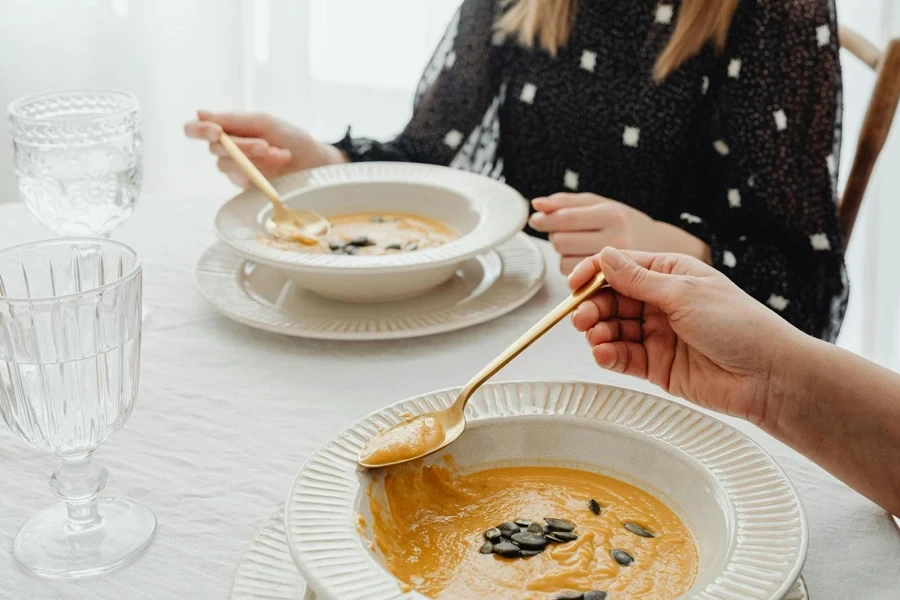
Soup spoons are a must-have for enjoying all those delicious liquid dishes (chunky soup, chili, chowder, bouillon, and creamy soups). Their unique shape lets consumers scoop up generous amounts without worrying about spills.
Typically measuring 6 to 8 inches, these spoons have a deeper and wider bowl than your average spoon, making them perfect for holding all that hot goodness. They also don’t have a tip because manufacturers design them for scooping, not digging into the food.
3. Table knife sets
Knives are the ideal flatware for cutting various foods. Businesses can offer up to three knife types for consumers building a flatware set. Here’s a look at the options.
Butter knife
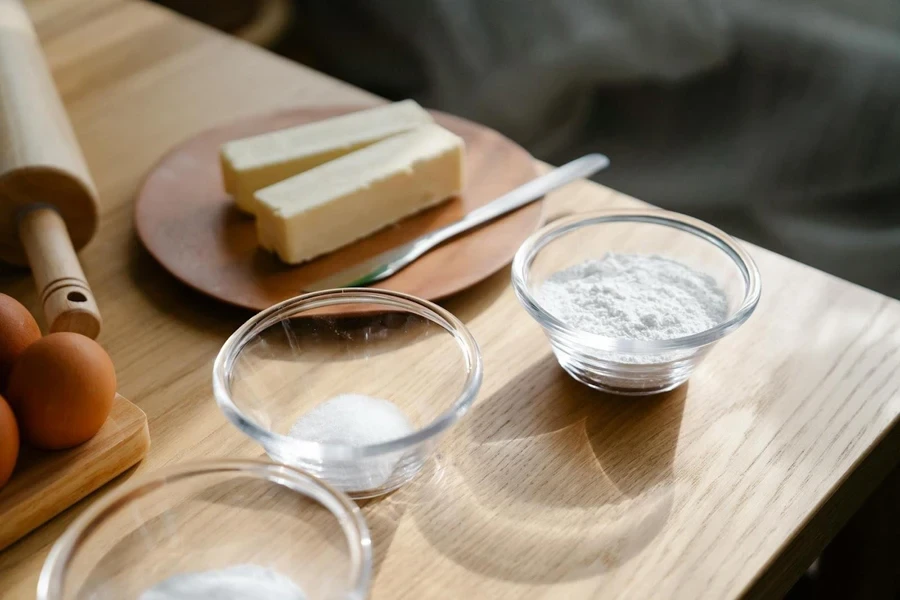
A butter knife is a simple yet essential tool for spreading butter, cream cheese, or any other delicious spread. Its rounded blade glides over soft bread and delicate pastries without tearing them apart. The blade is usually flat with a slight curve, so consumers can easily scoop up butter from the dish and spread it smoothly.
Businesses can find butter knives in a variety of styles. Some even come with flat or slanted handles, making them easier for those who need a little extra grip. Plus, they’re smaller than most knives, typically around 5 to 7 inches, which makes them perfect for everyday use.
Dinner knife
Dinner knives come in two main types: smooth and serrated. The smooth blade is perfect for gliding through softer foods like fruit or cheese, while the serrated edge makes quick work of tougher items like veggies or even meat (though they are not the best for it).
Many dinner knives also feature non-slip handles, so consumers can cut without worrying about the knife slipping out of their hands. Some even have special blade designs, like the Granton edge, which creates tiny air pockets. This helps them easily slice through dense or sticky foods.
Steak knife
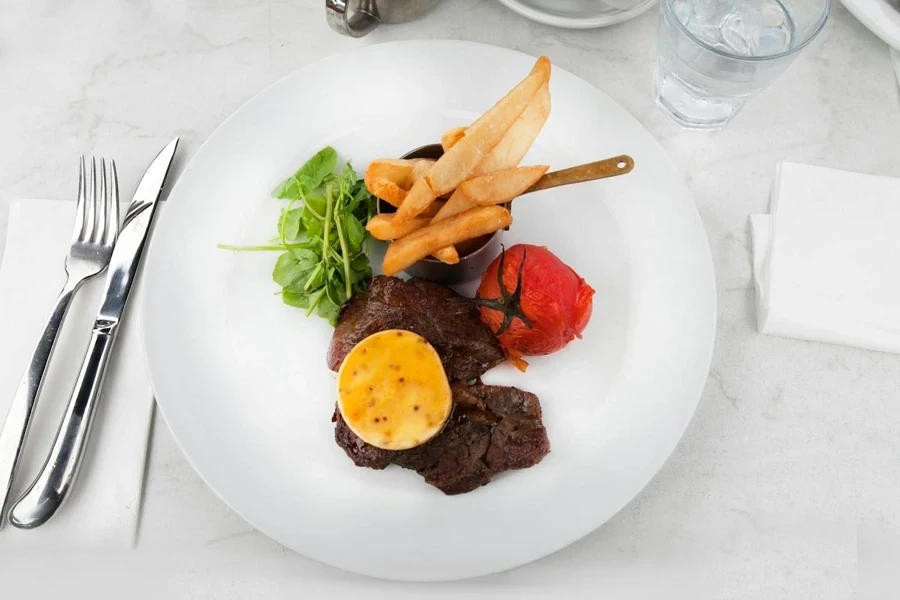
While dinner knives can handle meat, they can’t beat steak knives. They are the go-to for cutting through steaks, pork chops, and other hearty meats. They typically range from 8 to 10 inches long to give consumers the right control.
Also, steak knives often have two blade styles: serrated for easy slicing through tougher cuts or smooth for those who prefer a cleaner, precise cut. Most steak knives have simple and practical designs, but businesses can still offer ornate, elegant designs to match the upscale vibe in a fine dining setting.
4. Other flatware pieces
Gravy ladle
A gravy ladle is an awesome tool for serving the perfect gravy, sauce, or broth pour. Its deep, rounded bowl can scoop about 1 to 2 ounces, making these liquid dishes easy to serve without mess. They also have long handles for comfort, letting consumers safely serve hot liquids without worrying about spills or burns.
Cake server
Cake servers are a must-have for serving perfect cake or pie slices, especially at birthdays, weddings, and parties. Their wide, flat blades can cut through cake layers without making a mess. Additionally, they can be straight or slightly curved and may come with smooth or serrated edges, depending on the design.
Typically around 9 inches long, some cake servers have built-in cutting guides to help consumers slice even portions or a shaped blade that fits snugly into specific cake pans. It’s all about ensuring every slice looks as good as it tastes.
Pierced tablespoon
Pierced tablespoons are perfect for draining casseroles, fruits, and veggies before serving, making them a great addition to dinner tables. They’re about the same size and shape as regular tablespoons so that they will feel familiar in the user’s hand.
The key difference? Instead of a solid bowl, these have pierced holes that let liquids drain out. Some designs keep it simple with circular holes, while others get creative with intricate patterns, adding a little extra flair to the consumer’s flatware set!
Rounding up
Flatware sets are necessary to ensure everyone has a great dinner experience. It’s why their market is incredibly popular, as consumers increasingly love the idea of having many utensils for display or use. However, businesses must also consider the materials to ensure their consumers get the best offer.
Retailers can stock these flatware sets in sterling silver, silver plated, and stainless steel. Stainless steel is the most widespread flatware material, with 18/10 stainless steel being the most durable, 18/8 being the middle ground, and 18/0 being the cheapest. Keep these in mind when stocking these flatware sets for more sales.




